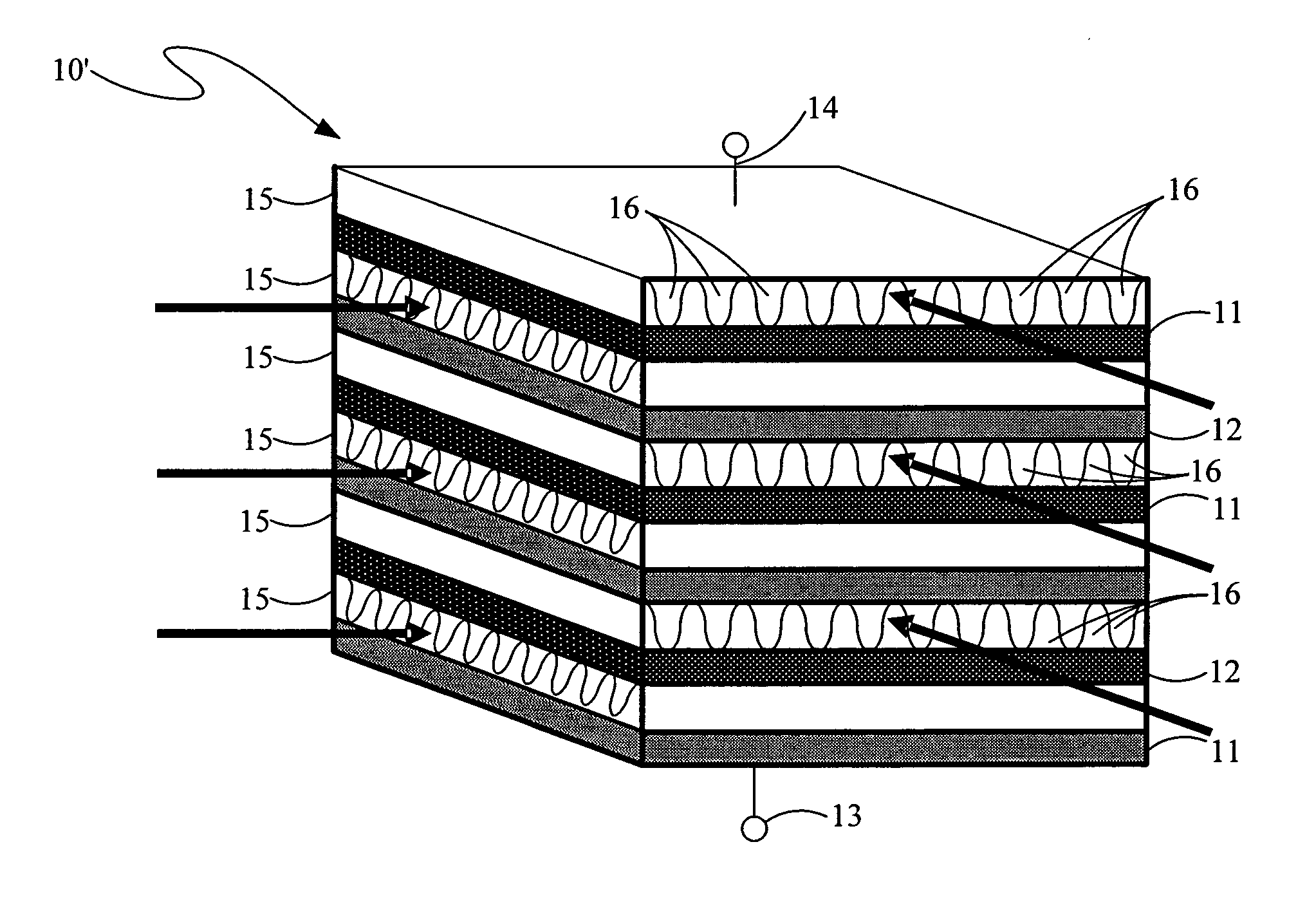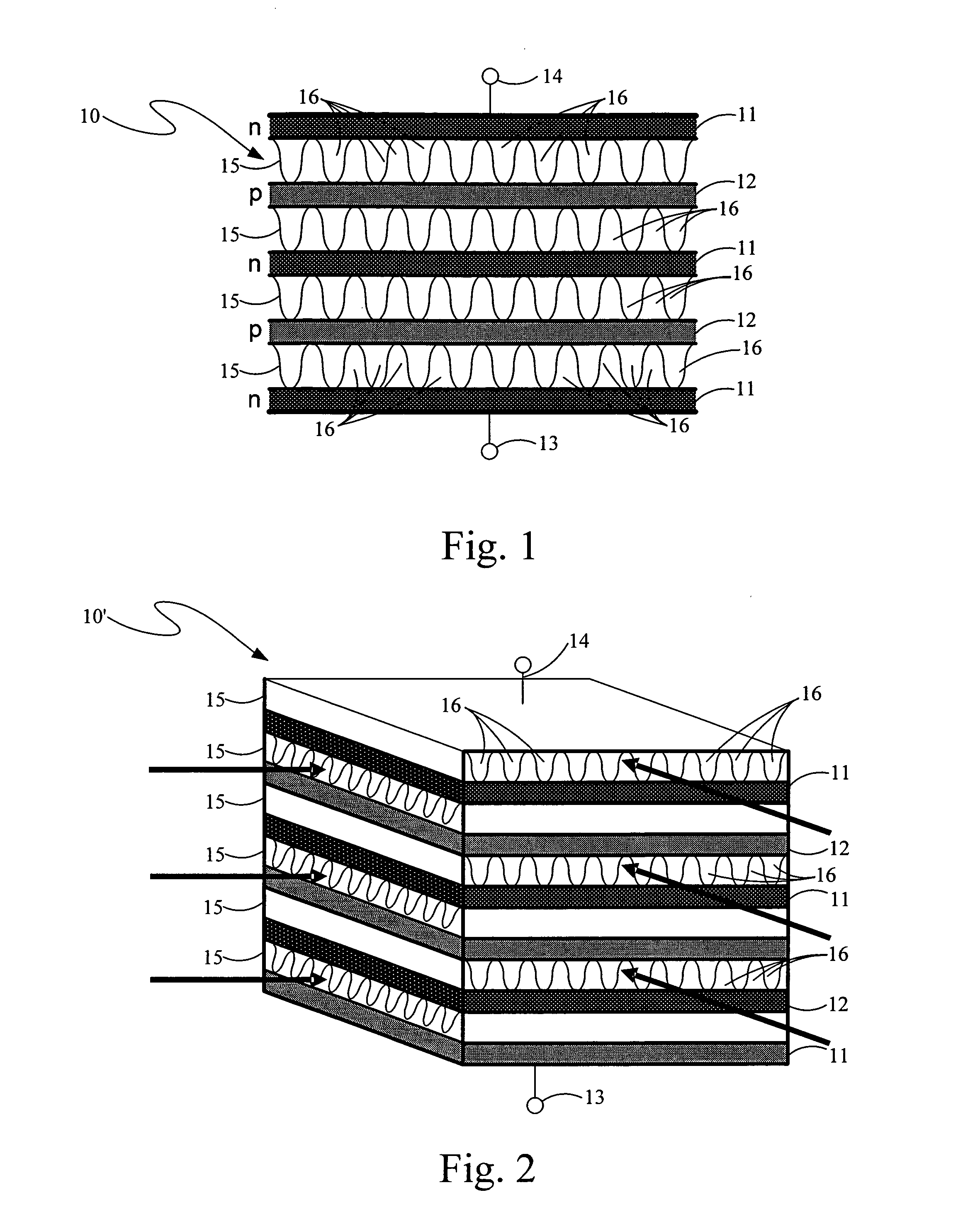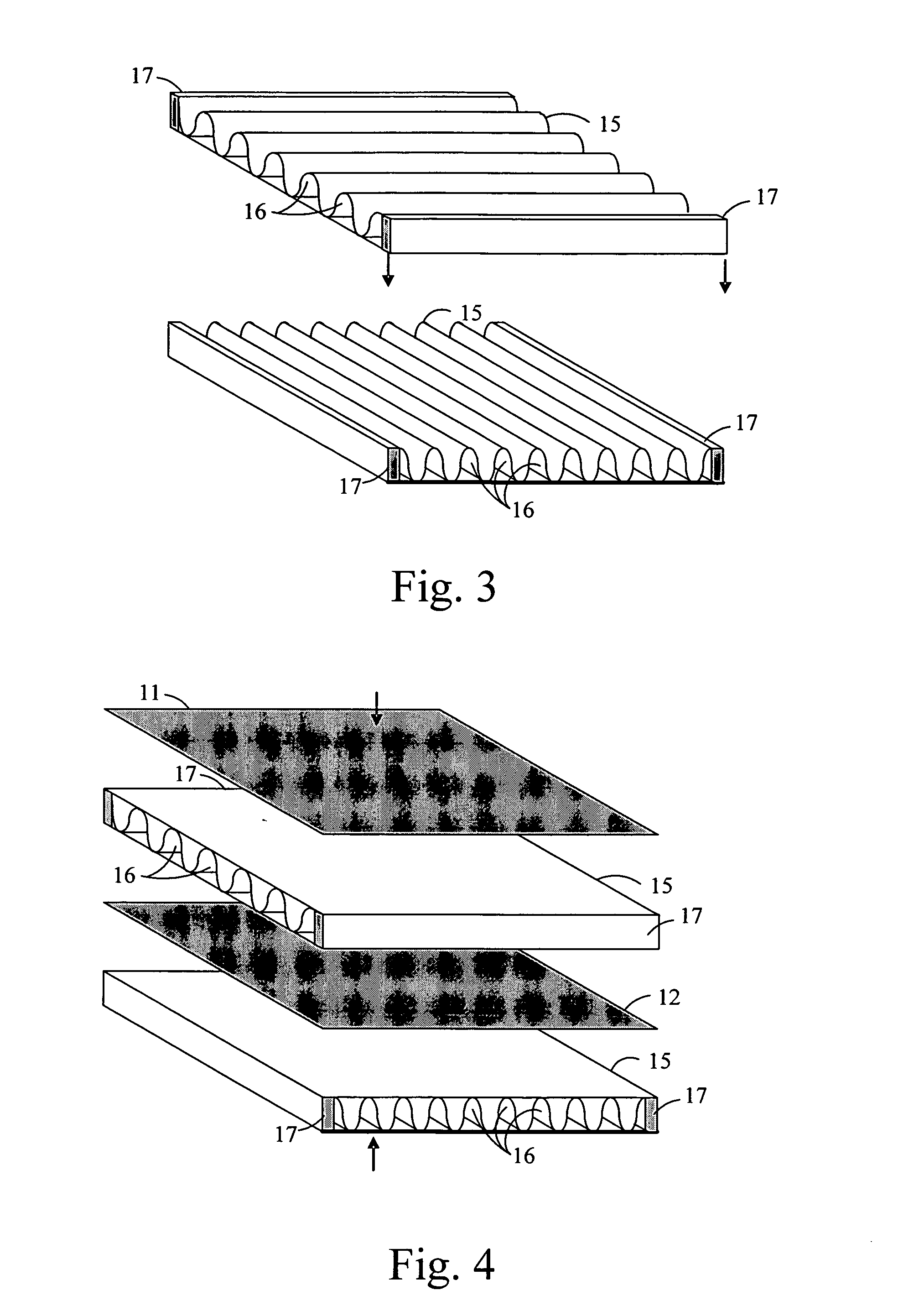Thermoelectric heat exchanger
a heat exchanger and thermoelectric technology, applied in the direction of thermoelectric devices with peltier/seeback effects, basic electric elements, electric apparatus, etc., can solve the problems of reducing heat transfer area, and reducing heat transfer efficiency
- Summary
- Abstract
- Description
- Claims
- Application Information
AI Technical Summary
Benefits of technology
Problems solved by technology
Method used
Image
Examples
Embodiment Construction
[0022]The present invention, as shown in part in the layer diagram side view thereof in FIG. 1, is a thermoelectric heat exchanger device, 10, for using thermal energy therein to generate electrical power or for using electrical power therein to provide cooling or heating, or both, depending on the materials used in the structure and the electrical currents or thermal gradients applied therein. Thermoelectric heat exchanger device 10 is formed of a succession of semiconductor or semimetal material layers provided therein in a spatial position sequence of alternating electrical conductivity types, p and n types, this spatial sequence of layers being distributed along a spatial curve, typically a line. Succeeding pairs of layers, each of a different conductivity type, are electrically interconnected to one another by a corresponding one of a plurality of electrical conductors positioned therebetween but are also spatially separated from one another by a corresponding one of a pluralit...
PUM
 Login to View More
Login to View More Abstract
Description
Claims
Application Information
 Login to View More
Login to View More - R&D
- Intellectual Property
- Life Sciences
- Materials
- Tech Scout
- Unparalleled Data Quality
- Higher Quality Content
- 60% Fewer Hallucinations
Browse by: Latest US Patents, China's latest patents, Technical Efficacy Thesaurus, Application Domain, Technology Topic, Popular Technical Reports.
© 2025 PatSnap. All rights reserved.Legal|Privacy policy|Modern Slavery Act Transparency Statement|Sitemap|About US| Contact US: help@patsnap.com



